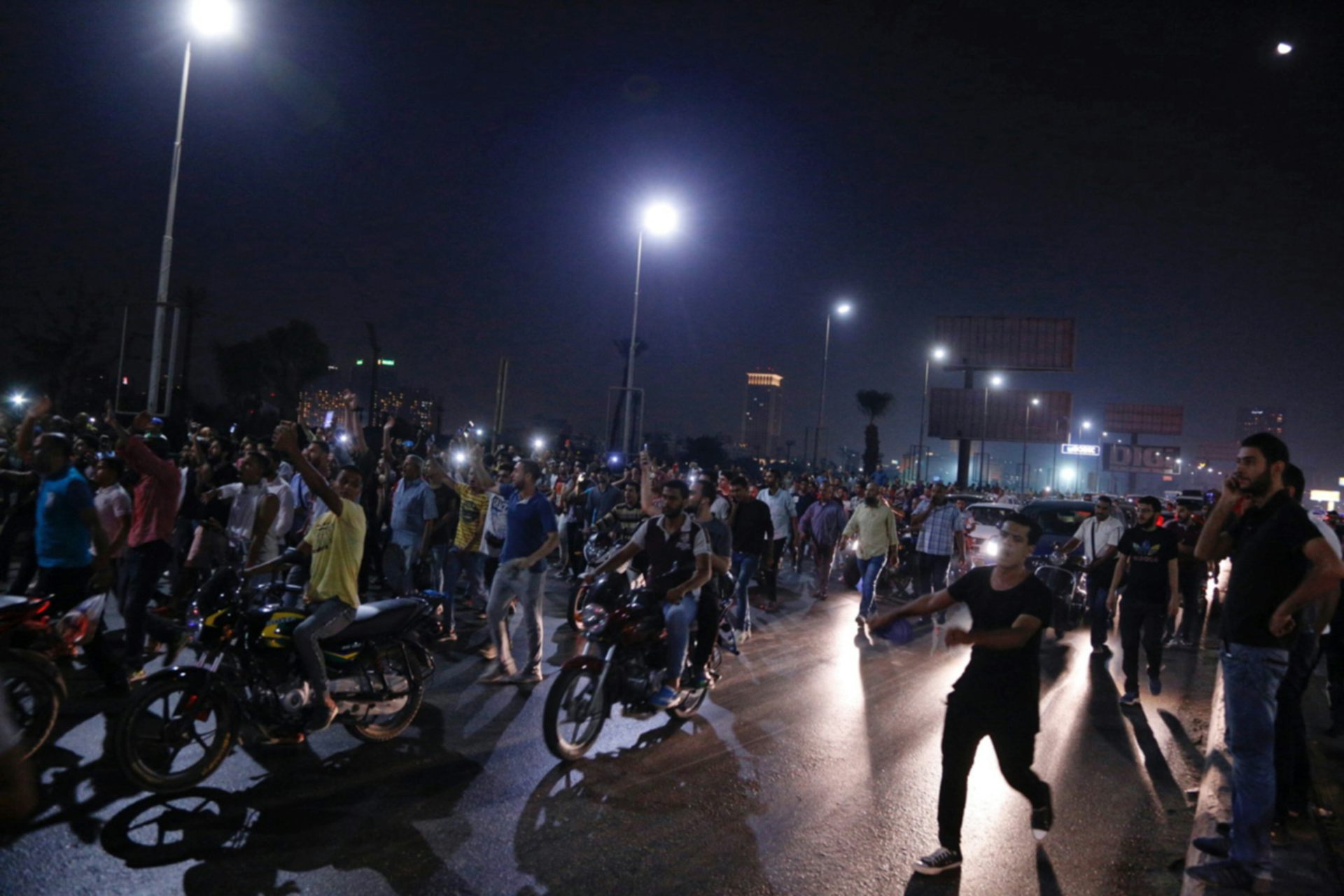
Popular protests against Egyptian president Abdel Fattah al-Sisi have spread to at least eight cities, with the largest crowds gathering in Cairo, Alexandria and Suez. These are the most significant demonstrations since July 2013 and since al-Sisi came to power in 2014. He is currently serving his second term.
The protests appear, in part, to have been sparked by a series of videos posted by Egyptian exile Mohamed Ali. In the videos Ali denounces corruption in the military establishment and claims that al-Sisi’s austerity measures have enriched elites and further impoverished the Egyptian masses.
Despite questions around the authenticity of the video, and while many suspect him to be a well-manoeuvred puppet of military elites wishing to topple al-Sisi, his words have struck a chord with tens of thousands of Egyptians.
Al-Sisi toppled President Mohammed Morsi and the Muslim Brotherhood government through a military coup d’etat in 2013. Since then he has ruled with an iron fist, which has included a crackdown on Islamists.
This has been accompanied by strengthening Egypt’s ties with Saudi Arabia and securing the continuation of US military aid, all under the guise of restoring Egypt to its position as a regional powerhouse.
His actions have raised growing concerns about the state of human rights in the country.
But there are also many Egyptians who support al-Sisi’s policies and downplay his authoritarianism, claiming he has stabilised and developed the country at a time of rising regional turmoil. These claims are supported by vanity projects such as the construction of a new administrative capital in the desert, which will cost an estimated $58 billion.
However, the protests that spread across the country reveal that not all is well in the land of US President Donald Trump’s “favourite dictator”. Rather, they point to deep cracks in his regime.
They have also come as a shock to many, and are significant given the atmosphere of oppression in the country. Moreover, that fact that the majority of protesters are not members of a particular political party or opposition group signals that there is deep public anger that cuts across different societal groups. As the protests have grown, the regime’s brutality as it cracks down on dissenters has escalated.
Crackdown
Since coming to power, al-Sisi has overseen an escalation of authoritarianism in the country.
Over the past year, the president has openly seized extra-judicial powers that have placed him above the rule of law. This has facilitated a crackdown on all forms of dissent.
In addition, political space is shrinking. There is now almost no room for dissent and opposition figures are routinely arrested and forcibly disappeared.
At the same time, Egypt’s military elites have grown richer under al-Sisi while the number of poor people has risen – from 28% of the country’s 99 million people in 2015 to a third last year. Earlier this year the World Bank reported that 60% of Egyptians were “either poor or vulnerable.”
This explains why Ali’s videos, which openly denounced structural corruption and the military’s role in increasing poverty in the country, struck a chord.
But, until now, protests and manifestations of dissent have been incredibly rare under the military regime. This is mostly because of the high cost of opposition.
Cracking down on dissent
The regime has used tried and tested methods to crack down on the protests. It has interfered with access to social media platforms and messaging apps in an attempt to prevent the organising of further demonstrations, while security forces fired on demonstrators in Suez using teargas, live and rubber bullets. As of Friday 27th, as the country braces for more protests, key metro stations in Cairo as well as Tahrir Square have been shut off. These actions further reveal just how worried the regime is about protests escalating and gaining even more momentum.
Meanwhile, the number of arrests keeps rising. Multiple international sources reported that thousands of protesters were arrested in the first week of the protests, with the number being closer to 2,000 on Friday 27th.
Even more telling is the fact that arrests are not limited to renowned opposition figures. They have also targeted al-Sisi’s critics, some of whom are affiliated to the armed forces, such as the spokesperson of the former army chief of staff Sami Anan.
Coupled with the fact that officers who ran against al-Sisi in the presidential campaigns had already been detained, the latest round of arrests reveals al-Sisi’s growing concern over internal dissent in the armed forces. This suggests his regime is nowhere near as stable or secure as he portrays it to be.
These developments suggest that al-Sisi’s strongman rhetoric is nothing but an attempt to cover up the inherent instability of his regime. It also raises questions about how secure his own position is. Given that the demonstrations spread so quickly around the country, many have started to believe that the military deep state, and those who brought al-Sisi to power, might be looking for a new figurehead.![]()
Lucia Ardovini, Fellow, Lancaster University
This article is republished from The Conversation under a Creative Commons license.

